Research on Air Pollution Control in China: From the Perspective of Quadrilateral Evolutionary Games
Abstract
1. Introduction
- There is to information asymmetry with the central government [14,15,16], competition between local governments for official promotion and in the area of environmental regulation, and local governments not only take orders from the central government but also have countermeasures and non-cooperation relationships with the central government [17,18,19].
- From the perspective of polluting enterprises, which are one of the main sources of air pollution in China [20,21] and the main source of pollution explored in this paper, because a large number of polluting enterprises are the major tax-payers that the local government relies heavily on, and some are even state-owned enterprises directly under the State-Owned Assets Supervision and Administration Commission (SASAC), the local governments have a certain collusion relationship with the polluting enterprises [22,23,24].
- From the perspective of public participation, on the one hand, air pollution should cause the public (the direct victims of pollution) to blow the whistle; on the other hand, the personal information leakage during whistleblowing and harassment and retaliation by polluters after whistleblowing would weaken the public’s initiative to participate. Therefore, it might be the case that some victims of pollution did not blow the whistle [25,26,27,28].
- Although many studies have further expanded dual-party games to tri-party games covering the central government, local governments, and polluting enterprises, these studies still failed to fully reflect the complex process of air pollution control in China [37]. In our tri-party game study in 2019, although we innovatively included the public into the pollution control game, regretfully, we did not include polluting enterprises as a game participant in the research framework [38].
2. Materials and Methods
2.1. The Parties in the Game and Their Strategy Choices
2.1.1. The Central Government
2.1.2. The Local Government
2.1.3. Enterprises
2.1.4. The Public
2.2. The Game Tree and Parameters
2.3. The Game Model
2.3.1. The Payoff Matrix of Quadrilateral Game Participants
2.3.2. The Replicator Dynamics Equation of the Central Government
2.3.3. The Replicator Dynamics Equation of the Local Government
2.3.4. The Replicator Dynamics Equation of Enterprises
2.3.5. The Replicator Dynamics Equation of The Public
3. Results
3.1. The Dynamic Trend and Evolutionary Stable Points of the Central Government
- The probability of the other parties’ strategy decisions, such as the probability of the local government choosing to regulate , the probability of the enterprise choosing to comply with regulations on emissions , and the probability of the public choosing to blow the whistle ;
- The costs and benefits of the central government’s strategies, including the monitoring cost , the long-term social welfare due to long-term monitoring , the reputation loss due to lack of monitoring , the economic or political penalties on local governments , the penalties on non-compliant enterprises , and the reward to whistleblowers .
3.2. The Dynamic Trend and Evolutionary Stable Points of the Local Government
- The probability of the other parties’ strategy decisions, such as the probability of the central government choosing to monitor , the probability of the enterprise choosing to comply with regulations on emissions , and the probability of the public choosing to blow the whistle ;
- The costs and benefits of the local government’s strategies, including the regulatory cost of the local government , the reputation and political achievement due to long-term regulatory efforts , the reputation loss due to insufficient regulatory efforts , and the economic or political penalties on local governments .
3.3. The Dynamic Trend and Evolutionary Stable Points of the Enterprises
- The probability of the other parties’ strategy decisions, such as the probability of the central government choosing to monitor , the probability of the local government choosing to regulate , and the probability of the public choosing to blow the whistle ;
- The costs and benefits of the enterprises’ strategies, including the cost of complying with regulations on emissions , penalty cost due to non-compliant emissions , and compensation to whistleblowers by polluting enterprises for negative externalities caused .
3.4. The Dynamic Trend and Evolutionary Stable Points of the Public
- The probability of the other parties’ strategy decisions, such as the probability of the central government choosing to monitor , the probability of the local government choosing to regulate , and the probability of the enterprises choosing to comply with regulations on emissions ;
- The costs and benefits of the public’s strategies, including the reward from the central government , the cost of whistleblowing , and the compensation from polluting enterprises for negative externalities caused .
4. Discussion
4.1. The Four-Dimensional Dynamic System and Its Equilibrium Points
- There are 16 equilibrium points for four-party pure strategy solutions, which are:Equation (28) indicates the four-party pure strategy solutions, which mean that the probability of the strategy selection of quadrilateral game participants is a certain value of 0 or 1. According to Equation (28), it can be seen that the probability of the quadrilateral game participants is all 0 or 1, and there are 16 strategy sets.
- There are at least eight equilibrium points for dual-party pure strategy solutions, which areEquation (29) indicates the dual-party pure strategy solutions, which mean that only two parties in the quadrilateral game participants have a strategy selection probability of 0 or 1, and the remaining two parties have a policy selection probability of uncertain values. According to Equation (29), there are at least eight strategy sets.
- There are at least two equilibrium points for single-party pure strategy solutions, which areEquation (30) indicates the single-party pure strategy solutions, which mean that only three parties in the quadrilateral game participants have a strategy selection probability of 0 or 1. According to Equation (30), there are at least two strategy sets.
- There may be a mixed strategy solution , whose existence requires the following conditions to be satisfied:
4.2. The Stability of the Four-Dimensional Dynamic System
4.3. The Ideality of the Solutions for the Four-Dimensional Dynamic System
5. Conclusions
Author Contributions
Funding
Conflicts of Interest
References
- Yuan, G.; Yang, W. Evaluating China’s Air Pollution Control Policy with Extended AQI Indicator System: Example of the Beijing-Tianjin-Hebei Region. Sustainability 2019, 11, 939. [Google Scholar] [CrossRef]
- Gao, H.; Yang, W.; Yang, Y.; Yuan, G. Analysis of the Air Quality and the Effect of Governance Policies in China’s Pearl River Delta, 2015–2018. Atmosphere 2019, 10, 412. [Google Scholar] [CrossRef]
- Yang, W.; Yuan, G.; Han, J. Is China’s air pollution control policy effective? Evidence from Yangtze River Delta cities. J. Clean. Prod. 2019, 220, 110–133. [Google Scholar] [CrossRef]
- Xi, J. Report at the 19th National Congress of the Communist Party of China. Available online: http://www.gov.cn/zhuanti/2017-10/27/content_5234876.htm (accessed on 29 December 2019).
- State Council of the People’s Republic of China. Notice of the State Council on Printing and Distributing the “Air Pollution Prevention and Control Action Plan”. Available online: http://www.gov.cn/zhengce/content/2013-09/13/content_4561.htm (accessed on 29 December 2019).
- Ministry of Environmental Protection. Temporary Provisions on the Management of Pollutant Discharge Permits. Available online: http://www.gov.cn/gongbao/content/2017/content_5217757.htm (accessed on 29 December 2019).
- Air Pollution Prevention and Control Law of the People’s Republic of China. In Proceedings of the Sixth Meeting of the Standing Committee of the Thirteenth National People’s Congress, Beijing, China, 22–26 October 2018; China Legal Publishing House: Beijing, China, 2018.
- Ministry of Ecology and Environment of the People’s Republic of China. Key Points on 2019 Nation-wide Air Pollution Prevention and Control. Available online: http://www.mee.gov.cn/xxgk2018/xxgk/xxgk05/201903/t20190306_694550.html (accessed on 29 December 2019).
- Thunis, P.; Clappier, A.; Pisoni, E.; Degraeuwe, B. Quantification of non-linearities as a function of time averaging in regional air quality modeling applications. Atmos. Environ. 2015, 103, 263–275. [Google Scholar] [CrossRef]
- Di Nicolantonio, W.; Cacciari, A.; Bolzacchini, F.; Ferrero, L.; Volta, M.; Pisoni, E. MODIS aerosol optical properties over North Italy for estimating surface-level PM2.5. In Proceedings of Envisat Symposium; ESA Publications Division: Montreux, Switzerland, 2007; Volume 636. [Google Scholar]
- Querol, X.; Tobías, A.; Pérez, N.; Karanasiou, A.; Amato, F.; Stafoggia, M.; García-Pando, C.P.; Ginoux, P.; Forastiere, F.; Gumy, S.; et al. Monitoring the impact of desert dust outbreaks for air quality for health studies. Environ. Int. 2019, 130, 104867. [Google Scholar] [CrossRef] [PubMed]
- Ministry of Ecology and Environment of the People’s Republic of China. Report on the National “12369” Environmental Protection Whistleblowing Management Platform in 2016. Available online: http://www.mee.gov.cn/gkml/hbb/bgth/201705/t20170512_414013.htm (accessed on 29 December 2019).
- Ministry of Ecology and Environment of the People’s Republic of China. Report of the Ministry of Ecology and Environment on the National “12369” Environmental Protection Whistleblowing in November 2019. Available online: http://www.mee.gov.cn/xxgk2018/xxgk/xxgk15/201912/t20191212_748408.html (accessed on 29 December 2019).
- Yang, W.; Li, L. Efficiency Evaluation and Policy Analysis of Industrial Wastewater Control in China. Energies 2017, 10, 1201. [Google Scholar] [CrossRef]
- Liu, Y.; Yao, X.; Wei, T. Energy efficiency gap and target setting: A study of information asymmetry between governments and industries in China. China Econ. Rev. 2019, 57, 101341. [Google Scholar] [CrossRef]
- Liu, G.; Wei, L.; Gu, J.; Zhou, T.; Liu, Y. Benefit distribution in urban renewal from the perspectives of efficiency and fairness: A game theoretical model and the government’s role in China. Cities 2020, 96, 102422. [Google Scholar] [CrossRef]
- Wang, J.; Wu, Q.; Yan, S.; Guo, G.; Peng, S. China’s local governments breaking the land use planning quota: A strategic interaction perspective. Land Use Policy 2020, 92, 104434. [Google Scholar] [CrossRef]
- Yuan, G.; Yang, W. Study on optimization of economic dispatching of electric power system based on Hybrid Intelligent Algorithms (PSO and AFSA). Energy 2019, 183, 926–935. [Google Scholar] [CrossRef]
- Yang, W.X.; Li, L.G. Analysis of total factor efficiency of water resource and energy in China: A study based on DEA-SBM model. Sustainability 2017, 9, 1316. [Google Scholar] [CrossRef]
- Du, Y.; Li, Z.; Du, J.; Li, N.; Yan, B. Public environmental appeal and innovation of heavy-polluting enterprises. J. Clean. Prod. 2019, 222, 1009–1022. [Google Scholar] [CrossRef]
- Wang, X.; Zhang, C.; Zhang, Z. Pollution haven or porter? The impact of environmental regulation on location choices of pollution-intensive firms in China. J. Environ. Manag. 2019, 248, 109248. [Google Scholar] [CrossRef] [PubMed]
- Zhao, X.; Li, H.; Wu, L.; Qi, Y. Implementation of energy-saving policies in China: How local governments assisted industrial enterprises in achieving energy-saving targets. Energy Policy 2014, 66, 170–184. [Google Scholar] [CrossRef]
- Yang, W.; Li, L. Energy Efficiency, Ownership Structure, and Sustainable Development: Evidence from China. Sustainability 2017, 9, 912. [Google Scholar] [CrossRef]
- Yao, X.; Zhang, X.; Guo, Z. The tug of war between local government and enterprises in reducing China’s carbon dioxide emissions intensity. Sci. Total Environ. 2020, 710, 136140. [Google Scholar] [CrossRef] [PubMed]
- Moy, G.G. The role of whistleblowers in protecting the safety and integrity of the food supply. NPJ Sci. Food 2018, 2, 8. [Google Scholar] [CrossRef]
- Yang, W.; Li, L. Efficiency evaluation of industrial waste gas control in China: A study based on data envelopment analysis (DEA) model. J. Clean. Prod. 2018, 179, 1–11. [Google Scholar] [CrossRef]
- Chen, L. A Review of Research on Whistle-Blowing. Am. J. Ind. Bus. Manag. 2019, 9, 295–305. [Google Scholar] [CrossRef]
- Chordiya, R.; Sabharwal, M.; Relly, J.E.; Berman, E.M. Organizational protection for whistleblowers: A cross-national study. Public Manag. Rev. 2019, 1–26. [Google Scholar] [CrossRef]
- Shi, G.; Wang, J.; Fu, F.; Xue, W. A study on transboundary air pollution based on a game theory model: Cases of SO2 emission reductions in the cities of Changsha, Zhuzhou and Xiangtan in China. Atmos. Pollut. Res. 2017, 8, 244–252. [Google Scholar] [CrossRef]
- Chang, S.; Qin, W.; Wang, X. Dynamic optimal strategies in transboundary pollution game under learning by doing. Phys. A Stat. Mech. Appl. 2018, 490, 139–147. [Google Scholar] [CrossRef]
- Wang, Q.; Zhao, L.; Guo, L.; Jiang, R.; Zeng, L.; Xie, Y.; Bo, X. A generalized Nash equilibrium game model for removing regional air pollutant. J. Clean. Prod. 2019, 227, 522–531. [Google Scholar] [CrossRef]
- Hong, Y.; Li, K.; Huang, B.; Tam, T. Real-time PM2.5 air pollution and social preferences: A large-scale behavioural game study using mobile apps in mainland China. Lancet Planet. Health 2019, 3, S15. [Google Scholar] [CrossRef]
- Shi, Y.; Han, B.; Zeng, Y. Simulating policy interventions in the interfirm diffusion of low-carbon technologies: An agent-based evolutionary game model. J. Clean. Prod. 2020, 250, 119449. [Google Scholar] [CrossRef]
- Huang, X.; He, P.; Zhang, W. A cooperative differential game of transboundary industrial pollution between two regions. J. Clean. Prod. 2016, 120, 43–52. [Google Scholar] [CrossRef]
- Lai, J.; Wan, J.W.L.; Zhang, S. Numerical methods for two person games arising from transboundary pollution with emission permit trading. Appl. Math. Comput. 2019, 350, 11–31. [Google Scholar] [CrossRef]
- da Silva Rocha, A.B.; Salomão, G.M. Environmental policy regulation and corporate compliance in evolutionary game models with well-mixed and structured populations. Eur. J. Oper. Res. 2019, 279, 486–501. [Google Scholar] [CrossRef]
- Zhou, Z.; Tan, Z.; Yu, X.; Zhang, R.; Wei, Y.; Zhang, M.; Sun, H.; Meng, J.; Mi, Z. The health benefits and economic effects of cooperative PM2.5 control: A cost-effectiveness game model. J. Clean. Prod. 2019, 228, 1572–1585. [Google Scholar] [CrossRef]
- Yang, Y.; Yang, W. Does Whistleblowing Work for Air Pollution Control in China? A Study Based on Three-party Evolutionary Game Model under Incomplete Information. Sustainability 2019, 11, 324. [Google Scholar] [CrossRef]
- Ministry of Ecology and Environment of the People’s Republic of China. Institutional Duties of the Central Ecological Environmental Protection Supervision Office. Available online: http://www.mee.gov.cn/zjhb/bjg/dcb/ (accessed on 29 December 2019).
- Li, Y.; Huang, S.; Yin, C.; Sun, G.; Ge, C. Construction and countermeasure discussion on government performance evaluation model of air pollution control: A case study from Beijing-Tianjin-Hebei region. J. Clean. Prod. 2020, 254, 120072. [Google Scholar] [CrossRef]
- Shen, X.; Yang, W.; Sun, S. Analysis of the Impact of China’s Hierarchical Medical System and Online Appointment Diagnosis System on the Sustainable Development of Public Health: A Case Study of Shanghai. Sustainability 2019, 11, 6564. [Google Scholar] [CrossRef]
- Shen, L.; Wang, Y. Supervision mechanism for pollution behavior of Chinese enterprises based on haze governance. J. Clean. Prod. 2018, 197, 571–582. [Google Scholar] [CrossRef]
- Ma, J.; Hou, A.; Tian, Y. Research on the complexity of green innovative enterprise in dynamic game model and governmental policy making. Chaos Solitons Fractals X 2019, 2, 100008. [Google Scholar] [CrossRef]
- Xinhua News Agency. The First Round of Central Ecological and Environmental Supervision and “Look Back”: More than 150,000 Environmental Problems, 2.46 Billion RMB in Fines, 2,264 People Detained. Available online: http://www.gov.cn/hudong/2019-05/15/content_5391977.htm (accessed on 29 December 2019).
- Wang, L. Research on Environmental Right of Reporting and its Protection in China. Master’s Thesis, Wangjian Law School, Soochow University, Suzhou, China, 2017. [Google Scholar]
- Feng, Y.; Ning, M.; Lei, Y.; Sun, Y.; Liu, W.; Wang, J. Defending blue sky in China: Effectiveness of the “Air Pollution Prevention and Control Action Plan” on air quality improvements from 2013 to 2017. J. Environ. Manag. 2019, 252, 109603. [Google Scholar] [CrossRef]
- Li, Y.; Yang, W.; Shen, X.; Yuan, G.; Wang, J. Water Environment Management and Performance Evaluation in Central China: A Research Based on Comprehensive Evaluation System. Water 2019, 11, 2472. [Google Scholar] [CrossRef]
- Adami, C.; Schossau, J.; Hintze, A. Evolutionary game theory using agent-based methods. Phys. Life Rev. 2016, 19, 1–26. [Google Scholar] [CrossRef]
- Babu, S.; Mohan, U. An integrated approach to evaluating sustainability in supply chains using evolutionary game theory. Comput. Oper. Res. 2018, 89, 269–283. [Google Scholar] [CrossRef]
- Park, O.; Shin, H.; Thourdos, A. Evolutionary Game Theory based Multi-Objective Optimization for Control Allocation of Over-Actuated System. IFAC PapersOnLine 2019, 52, 310–315. [Google Scholar] [CrossRef]
- Shi, Y.; Pan, M.; Peng, D. Replicator dynamics and evolutionary game of social tolerance: The role of neutral agents. Econ. Lett. 2017, 159, 10–14. [Google Scholar] [CrossRef]
- Křivan, V.; Galanthay, T.E.; Cressman, R. Beyond replicator dynamics: From frequency to density dependent models of evolutionary games. J. Theor. Biol. 2018, 455, 232–248. [Google Scholar] [CrossRef]
- Wang, Q.; He, N.; Chen, X. Replicator dynamics for public goods game with resource allocation in large populations. Appl. Math. Comput. 2018, 328, 162–170. [Google Scholar] [CrossRef]
- Friedman, D. On economic applications of evolutionary game theory. J. Evol. Econ. 1998, 8, 15–43. [Google Scholar] [CrossRef]
- Brady, M.; Mamanduru, V.K.; Tiwari, M.K. An evolutionary algorithmic approach to determine the Nash equilibrium in a duopoly with nonlinearities and constraints. Expert Syst. Appl. 2017, 74, 29–40. [Google Scholar] [CrossRef]
- Selten, R. A note on evolutionarily stable strategies in asymmetric animal conflicts. J. Theor. Biol. 1980, 84, 93–101. [Google Scholar] [CrossRef]
- Mengüç, E.C.; Acir, N. Real-time implementation of Lyapunov stability theory-based adaptive filter on FPGA. IEICE Trans. Electron. 2016, 99, 129–137. [Google Scholar] [CrossRef]
- Huang, Z.; Xiong, X.; Chen, W.; Zhang, Q.; Liu, Y.; Chen, Y. Three bounded proofs for nonlinear multi-input multi-output approximate dynamic programming based on the Lyapunov stability theory. Optim. Control Appl. Methods 2018, 39, 35–50. [Google Scholar] [CrossRef]
- Xu, L.; Du, J.; Wang, W. Evolutionary Game Analysis on Rural Water Environmental Governance. China Popul. Environ. 2017, 27, 17–26. (In Chinese) [Google Scholar]
- Mondié, S.; Egorov, A.V.; Gomez, M.A. Stability conditions for time delay systems in terms of the Lyapunov matrix Partially supported by Project Conacyt 180725. IFAC PapersOnLine 2018, 51, 136–141. [Google Scholar] [CrossRef]
- Braun, P.; Kellett, C.M.; Zaccarian, L. Complete control Lyapunov functions: Stability under state constraints P. Braun and C. M. Kellett are supported by the Australian Research Council (Grant number: ARC-DP160102138). L. Zaccarian is supported in part by ANR via project HANDY, number ANR-18. IFAC PapersOnLine 2019, 52, 358–363. [Google Scholar] [CrossRef]
- Goebel, R. Stability and robustness for saddle-point dynamics through monotone mappings. Syst. Control Lett. 2017, 108, 16–22. [Google Scholar] [CrossRef]
- Liu, F.; Zhang, B.; Yang, Z. Lyapunov stability and numerical analysis of excursive instability for forced two-phase boiling flow in a horizontal channel. Appl. Therm. Eng. 2019, 159, 113664. [Google Scholar] [CrossRef]
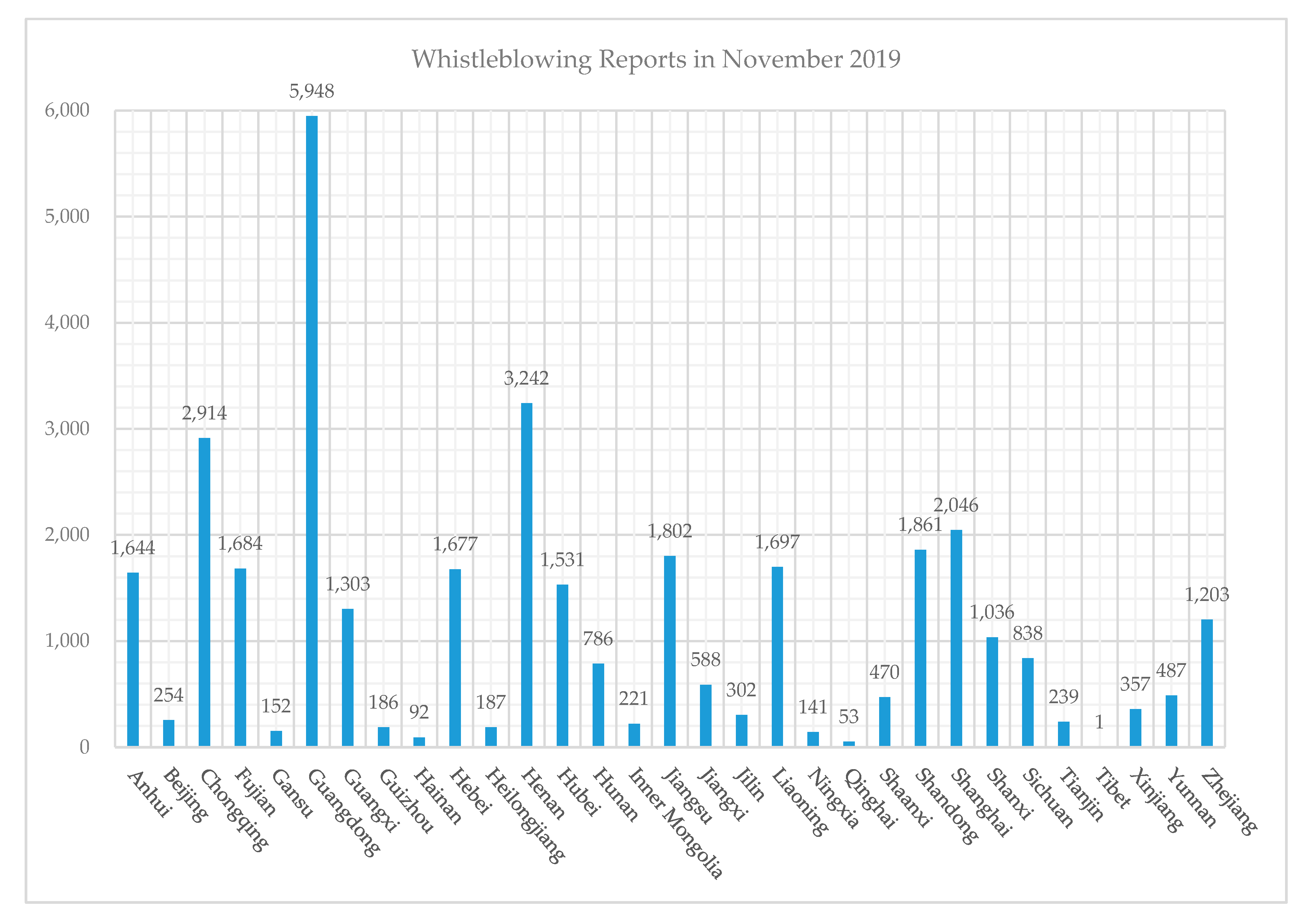
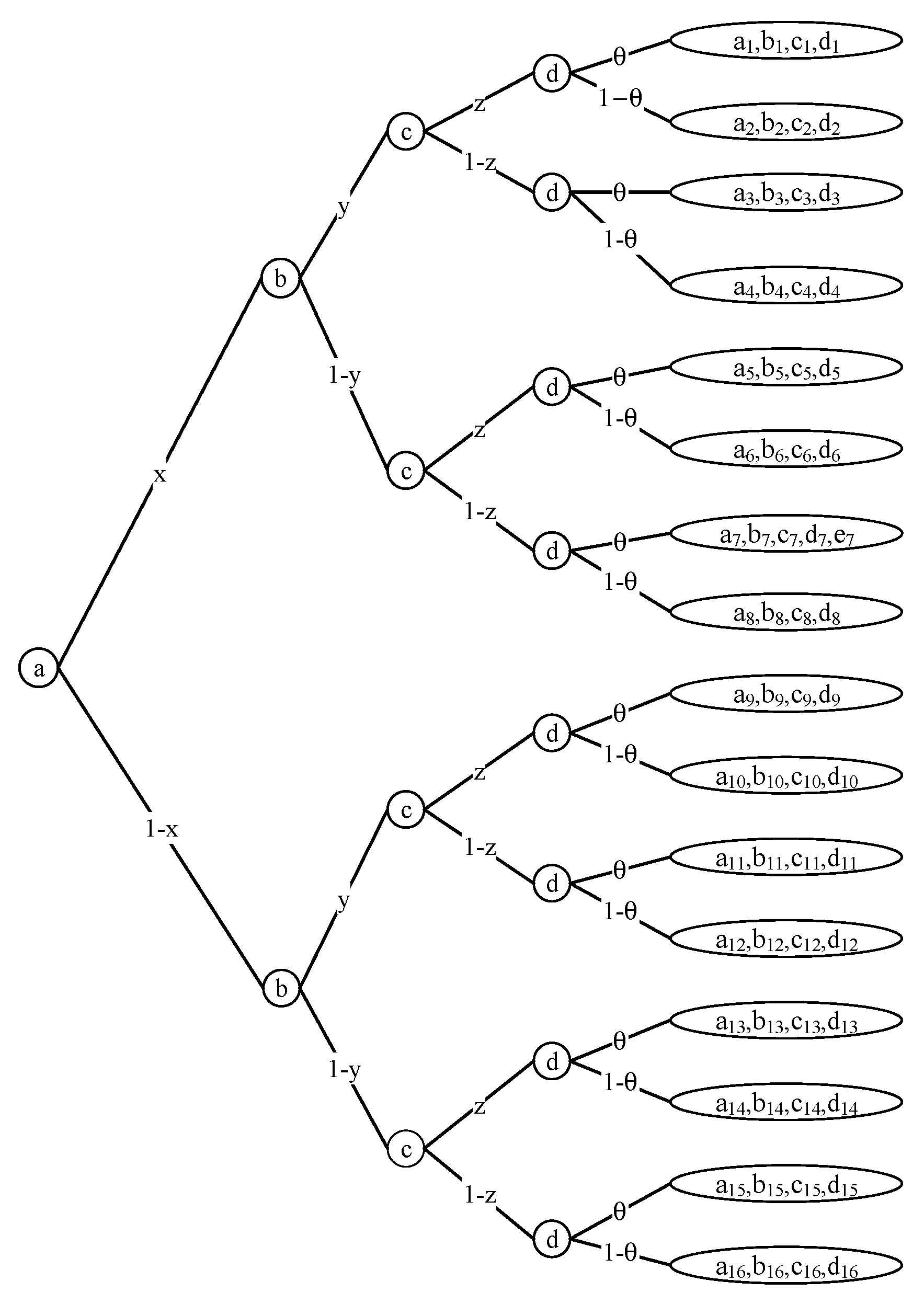
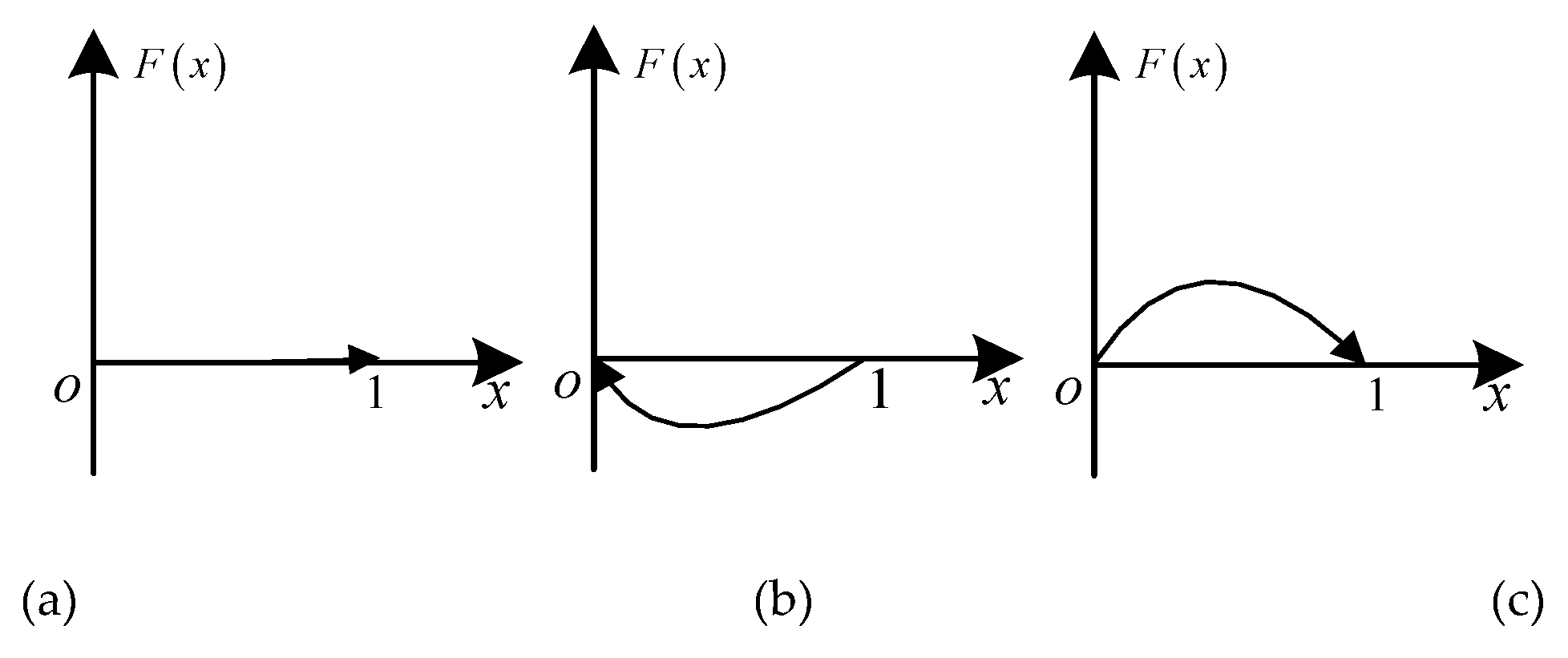
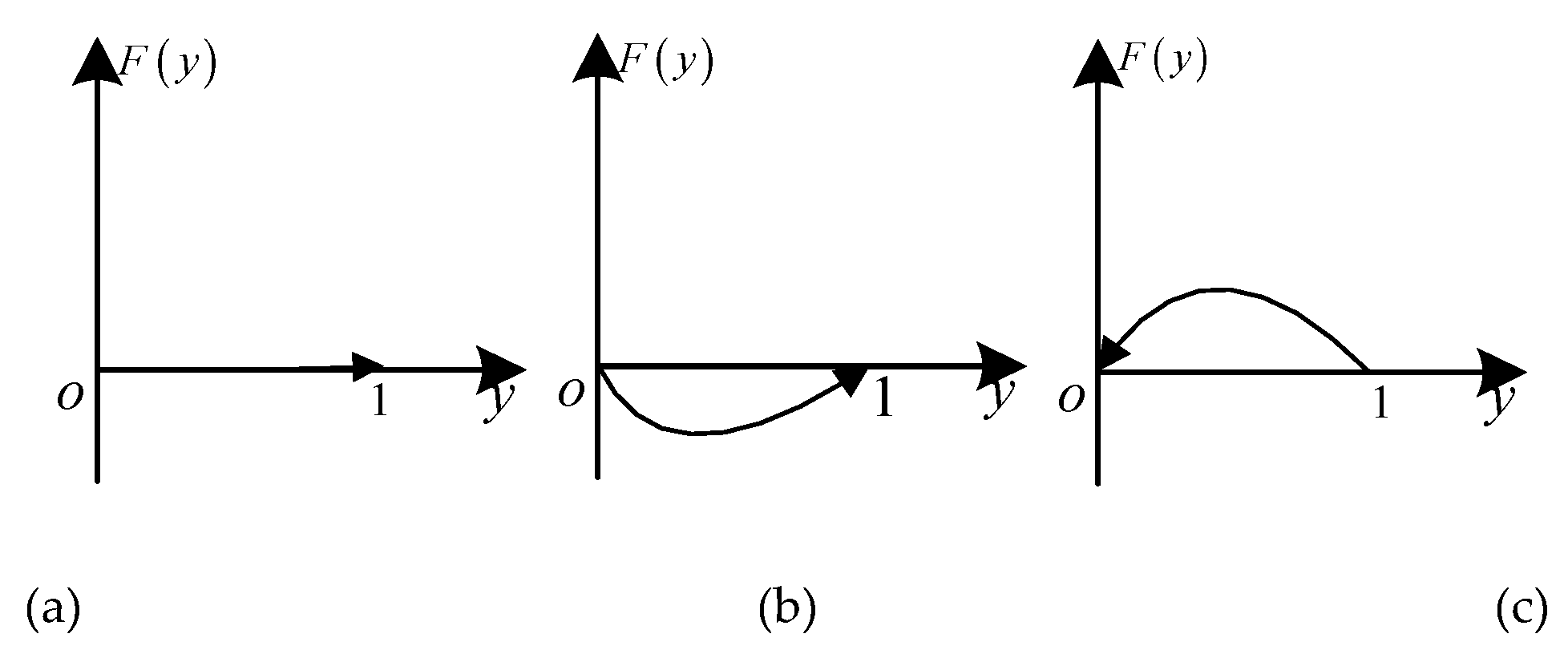
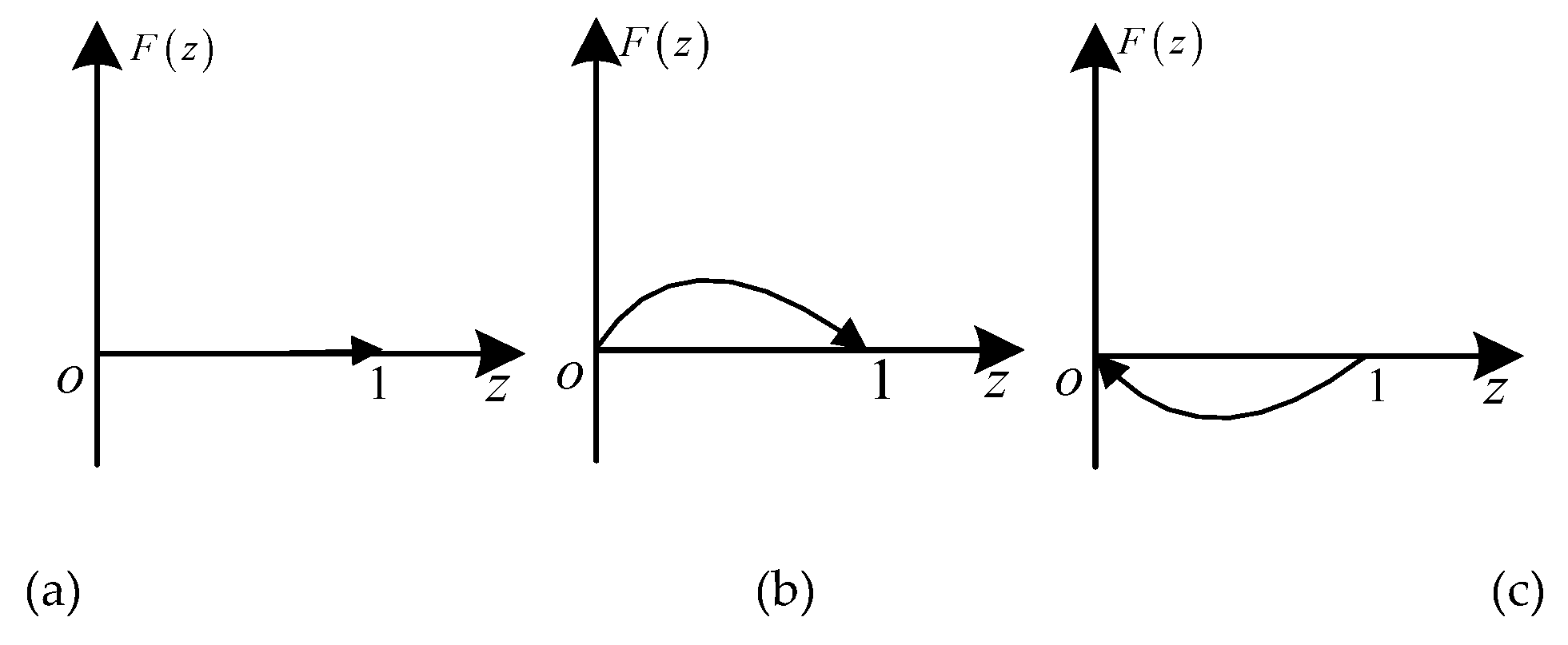
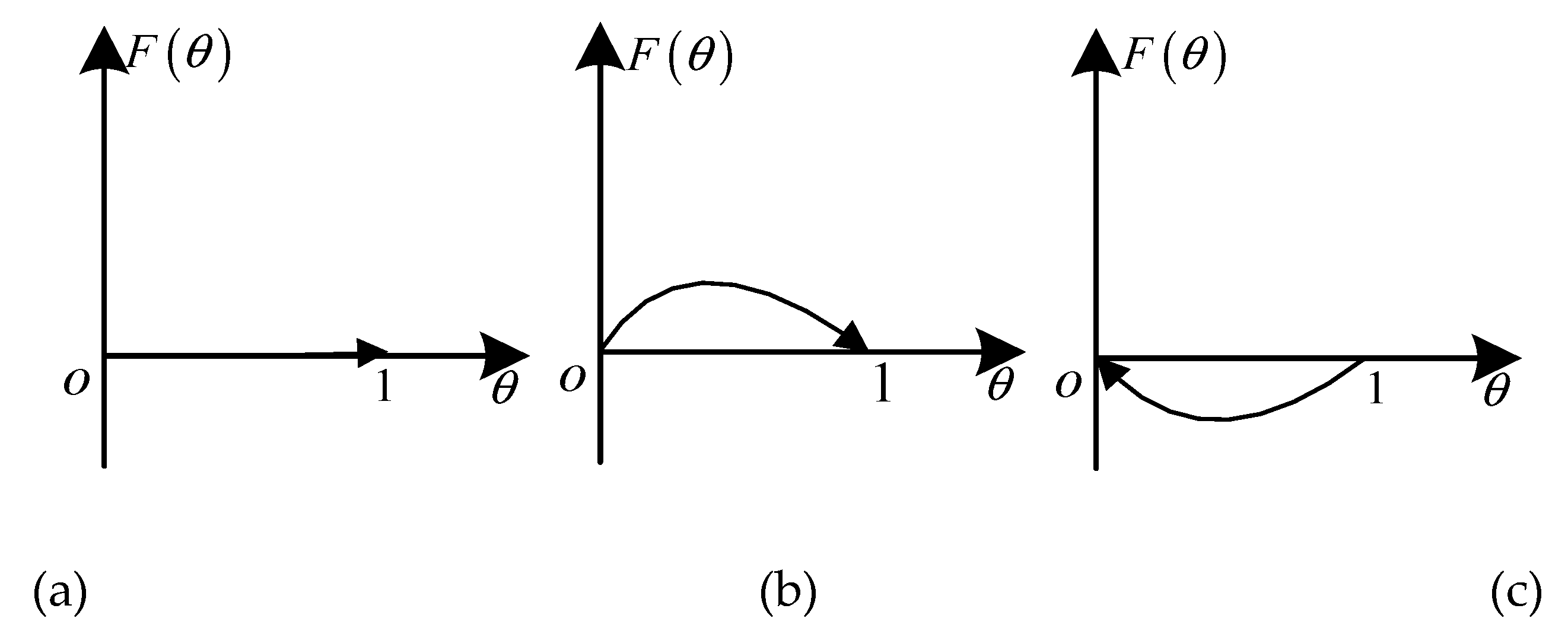
| Parameter | Definition | Range |
|---|---|---|
| The probability that the central government chooses to monitor | ||
| The probability that the central government chooses not to monitor | ||
| The probability that the local government chooses to regulate | ||
| The probability that the local government chooses not to regulate | ||
| The probability that enterprises comply with the regulations | ||
| The probability that enterprises violate the regulations | ||
| The probability that the public choose to blow the whistle | ||
| The probability that the public choose not to blow the whistle | ||
| The long-term social welfare due to air quality improvement when the central government monitors, the local government regulates polluting activities, and enterprises comply with the regulations | ||
| The monitoring cost of the central government | ||
| The reputation loss if the central government chooses not to monitor | ||
| The long-term reputation gain and political achievement of the local government if it chooses to regulate polluting activities and encourage emission reduction | ||
| The cost of the local government if it chooses to regulate polluting activities and the economic loss brought by strict regulation | ||
| The reputation loss if the local government chooses not to regulate | ||
| The punishment on the local government if the local government chooses not to regulate and enterprises’ polluting activity is caught by the central government | ||
| The technology investment cost required by enterprises to comply with the regulations and related impacts on their main operation income | ||
| The reputation loss of the enterprise if it chooses to violate the regulations | ||
| The penalty on enterprises if their illegal polluting activity is caught by the local government or central government, which belongs to the central government | ||
| The cost of the public to blow the whistle | ||
| The reward granted to the whistleblower by the central government | ||
| The compensation to the whistleblower from polluting enterprises if the local government chooses to regulate | ||
| The adverse health impact on the public if the local government chooses not to regulate |
| The Central Government | |||||||
| Monitor | Not Monitor | ||||||
| The Local Government | |||||||
| Regulate | Not Regulate | Regulate | Not Regulate | ||||
| Enterprises | Comply with Regulations | The Public | Blow the Whistle | ||||
| Not Blow the Whistle | |||||||
| Violate Regulations | Blow the Whistle | ||||||
| Not Blow the Whistle | |||||||
| Equilibrium Point | Eigenvalues | Asymptotic Stability Condition | |||
|---|---|---|---|---|---|
| … | … | … | … | … | … |
| … | |||||
| … | … | … | … | … | … |
| … | |||||
| … | … | … | … | … | … |
| … | |||||
| … | … | … | … | … | … |
| … | |||||
| … | … | … | … | … | … |
| … | |||||
| … | … | … | … | … | … |
| Equilibrium Point | Strategy Set of Game Participants | Policy Performance |
|---|---|---|
| (Not Monitor, Not Regulate, Violate Regulations, Not Blow the Whistle) | Least Ideal | |
| (Not Monitor, Not Regulate, Violate Regulations, Blow the Whistle) | Less than Ideal | |
| (Not Monitor, Not Regulate, Comply with Regulations, Not Blow the Whistle) | Most Ideal | |
| (Not Monitor, Regulate, Violate Regulations, Not Blow the Whistle) | Less than Ideal | |
| (Strictly Monitor, Not Regulate, Violate Regulations, Not Blow the Whistle) | Less than Ideal | |
| (Not Monitor, Not Regulate, Comply with Regulations, Blow the Whistle) | More than Ideal | |
| (Not Monitor, Regulate, Comply with Regulations, Not Blow the Whistle) | More than Ideal | |
| (Monitor, Regulate, Violate Regulations, Not Blow the Whistle) | Least Ideal | |
| (Monitor, Not Regulate, Violate Regulations, Blow the Whistle) | Least Ideal | |
| (Monitor, Not Regulate, Comply with Regulations, Not Blow the Whistle) | More than Ideal | |
| (Not Monitor, Regulate, Violate Regulations, Blow the Whistle) | Less than Ideal | |
| (Monitor, Regulate, Comply with Regulations, Not Blow the Whistle) | Ideal | |
| (Monitor, Regulate, Violate Regulations, Blow the Whistle) | Least Ideal | |
| (Monitor, Not Regulate, Comply with Regulations, Blow the Whistle) | Ideal | |
| (Not Monitor, Regulate, Comply with Regulations, Blow the Whistle) | Ideal | |
| (Monitor, Regulate, Comply with Regulations, Blow the Whistle) | Ideal | |
| (Not Monitor, Regulate, Partially Comply with Regulations, Partially Blow the Whistle) | Less than Ideal | |
| (Not Monitor, Partially Regulate, Partially Comply with Regulations, Not Blow the Whistle) | Less than Ideal | |
| (Not Monitor, Partially Regulate, Partially Comply with Regulations, Blow the Whistle) | Less than Ideal | |
| (Monitor, Not Regulate, Partially Comply with Regulations, Partially Blow the Whistle) | Less than Ideal | |
| (Partially Monitor, Not Regulate, Violate Regulations, Partially Blow the Whistle) | Least Ideal | |
| (Partially Monitor, Not Regulate, Comply with Regulations, Partially Blow the Whistle) | Less than Ideal | |
| (Partially Monitor, Not Regulate, Partially Comply with Regulations, Not Blow the Whistle) | Less than Ideal | |
| (Partially Monitor, Not Regulate, Partially Comply with Regulations, Blow the Whistle) | Less than Ideal | |
| (Partially Monitor, Not Regulate, Partially Comply with Regulations, Partially Blow the Whistle) | Less than Ideal | |
| (Partially Monitor, Not Regulate, Partially Comply with Regulations, Partially Blow the Whistle) | Less than Ideal | |
| (Partially Monitor, Partially Regulate, Partially Comply with Regulations, Partially Blow the Whistle) | Less than Ideal |
© 2020 by the authors. Licensee MDPI, Basel, Switzerland. This article is an open access article distributed under the terms and conditions of the Creative Commons Attribution (CC BY) license (http://creativecommons.org/licenses/by/4.0/).
Share and Cite
Yang, W.; Yang, Y. Research on Air Pollution Control in China: From the Perspective of Quadrilateral Evolutionary Games. Sustainability 2020, 12, 1756. https://doi.org/10.3390/su12051756
Yang W, Yang Y. Research on Air Pollution Control in China: From the Perspective of Quadrilateral Evolutionary Games. Sustainability. 2020; 12(5):1756. https://doi.org/10.3390/su12051756
Chicago/Turabian StyleYang, Weixin, and Yunpeng Yang. 2020. "Research on Air Pollution Control in China: From the Perspective of Quadrilateral Evolutionary Games" Sustainability 12, no. 5: 1756. https://doi.org/10.3390/su12051756
APA StyleYang, W., & Yang, Y. (2020). Research on Air Pollution Control in China: From the Perspective of Quadrilateral Evolutionary Games. Sustainability, 12(5), 1756. https://doi.org/10.3390/su12051756





